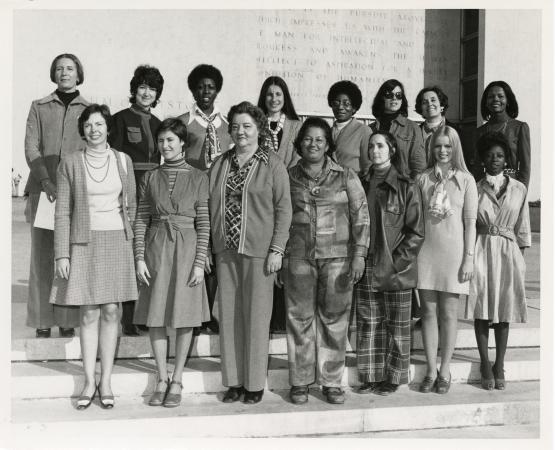Women have been foundational to the creation, management, and upkeep of the Smithsonian since its inception. However, this was seldom visible to the public, as women were rarely hired for upper level positions. When women were hired, they were paid markedly less than their male peers. This was true throughout all echelons of the Smithsonian; from museum curator to the Board of Regents, there was a lack of gender diversity.
Beginning in the 1970s, however, things began to change. In 1977, Lindy Boggs, a senator from Louisiana, became the first woman elected to the Board of Regents. Alongside this historic moment, women throughout the Smithsonian Institution were breaking glass ceilings. They refused to be paid less, and so were passed up for deserved promotions. This summer, as an intern at the Smithsonian Institution Archives, I had the pleasure of processing the collection of one woman who dared to demand change.

Joanna Cohan Scherer worked for the Smithsonian Institution beginning in 1966. She started as a museum technician in the anthropology archives (currently the National Anthropological Archives) and, in 1970, transitioned to illustrations researcher for the twenty-volume Handbook of North American Indians in the Smithsonian Office of Anthropology. During Scherer’s time in the department, she faced numerous instances of gender discrimination. By 1974, the Department of Anthropology had never hired a woman curator, despite the fact that there were thousands of professionally-trained female anthropologists in the discipline. Determined to change the system, Scherer filed a class action and sex discrimination suit against the Department of Anthropology. The complaint was settled in her favor on March 12, 1975.

This was a victory in two tangible ways. Firstly, Scherer received a long overdue promotion and her employment title was changed from Museum Specialist to Anthropologist. Secondly, Adrienne Kaeppler—the first woman hired as a curator of anthropology—was brought on board later that year.
Perhaps most importantly, however, the case sent a message throughout the Smithsonian: gender discrimination in hiring was quickly becoming unacceptable.

However, Scherer’s work was not done. In 1975, she filed a reprisal complaint, claiming that after her victory in the sex discrimination suit, the Handbook of North American Indians management had retaliated against her. As her records reveal, various supervisors harassed her, unfairly critiqued her work, and passed her up for other deserved promotions. The case (Scherer v. Ripley, CA 77-1856) was heard in the U.S. District Court for the District of Columbia, On February 11, 1982, the court ruled in her favor.
Joanna Cohan Scherer’s trailblazing changed the lives of female anthropologists both within and outside of the Smithsonian. She is one of many women throughout the Smithsonian’s history who helped pave the way for equal employment. It is vital to remember histories like Scherer’s and their vital role in making the Smithsonian what it is today.
Related Collections
- Smithsonian Institution Women's Council, Council Records, 1980-1996, Smithsonian Institution Archives, Accession 18-269
- Joanna Cohan Scherer Papers, 1960-2014, Accession 19-190
- “Out of the Shadows,” Idaho Experience, Idaho Public Television
Produced by the Smithsonian Institution Archives. For copyright questions, please see the Terms of Use.

Leave a Comment